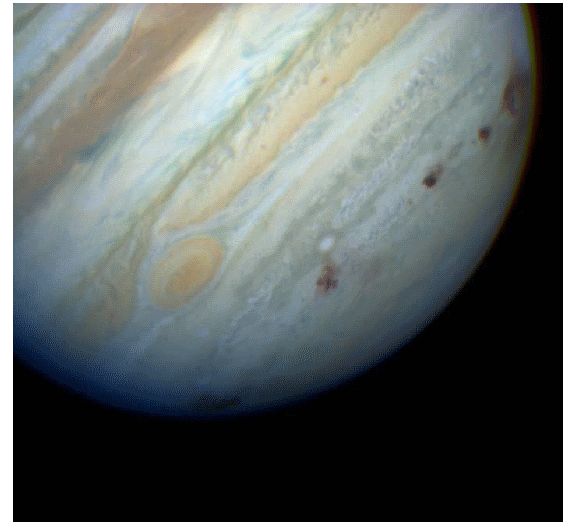23 APRIL 2013
Nearly all the water present in Jupiter's upper atmosphere today comes from the comet Shoemaker-Levy 9, which collided with the planet in July 1994. Using ESA's Herschel telescope, the discovery was made by an international team of astronomers led by a researcher from the Laboratoire d'Astrophysique de Bordeaux (CNRS/Université Bordeaux 1). It is published in the journal Astronomy and Astrophysics dated 23 April 2013.
Comet Shoemaker-Levy 9 (SL9) went down in astronomical history when it collided with Jupiter in July 1994. The spectacular impact, which left visible traces on the planet's surface for several weeks, was observed by both professional and amateur astronomers worldwide. This was the first time that an extraterrestrial collision between two Solar System objects had ever been observed.
Three years later, ISO, ESA's infrared telescope, detected water vapor in Jupiter's upper atmosphere for the first time. While it is well known that there is water in the lower atmosphere of gas giants, this deep water condenses in the region of the visible cloud layers and cannot reach the upper atmosphere. Since comets are water-rich, Shoemaker-Levy 9 was therefore suspected of being the source of the observed water vapor. Nonetheless, other causes seemed possible, such as interplanetary dust, which results from the activity of comets and collisions between asteroids, or alternatively, certain satellites of Jupiter, whose ice-covered surfaces might provide a source of water for the planet's atmosphere when bombarded by interplanetary particles.
Sixteen years later, the question has finally been settled with the help of ESA's Herschel telescope. Thanks to the telescope's extremely high sensitivity, the distribution of water vapor in Jupiter's stratosphere was mapped in 3D for the first time by an international team led by Thibault Cavalié from the Laboratoire d'Astrophysique de Bordeaux1 (CNRS/Université Bordeaux 1), also including researchers from LESIA (Observatoire de Paris/CNRS/Univ. Pierreet- Marie-Curie/Univ. Paris Diderot). The team discovered twice to three times as much water in Jupiter's southern hemisphere, which was impacted by Shoemaker-Levy 9, as in its northern hemisphere. Furthermore, the maximum density of the water column was observed at 44°S, exactly where the comet had impacted. Any doubts about the origin of the water in Jupiter's upper atmosphere can now be permanently laid to rest. The astromomers have provided clear evidence that 95% of the water observed in Jupiter's stratosphere was deposited there by comet SL9.
Reference: Cavalié et al., 2013, A&A, 553, A21, www.aanda.org/10.1051/0004-6361/201220797















